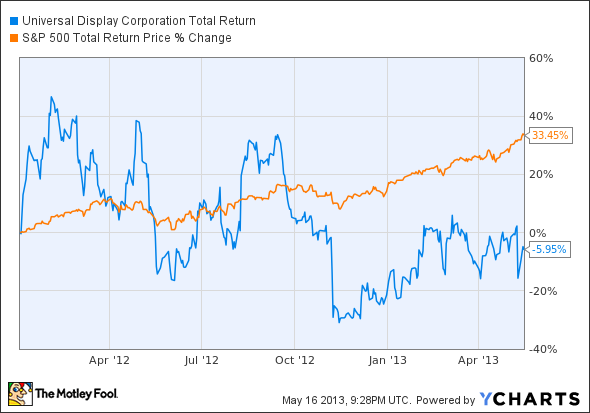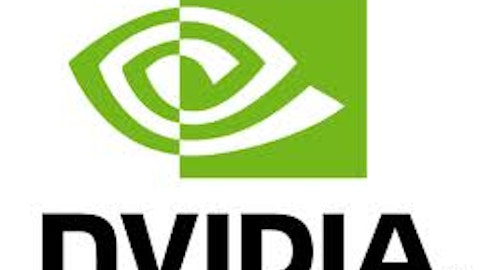As a longtime shareholder of OLED technologist Universal Display Corporation (NASDAQ:PANL), I’m sure I’m not alone in saying it has felt like an eternity since the first 55-inch OLED televisions were unveiled by Samsung and LG Display Co Ltd. (ADR) (NYSE:LPL) at the 2012 Consumer Electronics Show in Vegas.
Of course, both companies had already told the world what they had been working on, but to actually see the incredible aesthetics and picture quality of a large screen OLED television finally made it seem real.

LG OLED television. Source: LG Display
Alas, while hopes ran high for commercial availability of OLED TVs in 2012, the year came and went with little additional movement on that front, thanks largely to difficulties in improving manufacturing yields enough to make mass production feasible.
Until recently, industry leader Samsung was stuck at a production yield of only 20% with its RGB evaporation technology, which is used to deposit the organic material in the top-emitting OLED structure. In fact, those difficulties were the reason LG Display Co Ltd. (ADR) (NYSE:LPL) decided to focus its efforts on apparently simpler methods involved with implementing white OLED evaporation technology.
Even worse, things started to get ugly as Samsung and LG Display Co Ltd. (ADR) (NYSE:LPL) began to duke it out in the courtrooms over technology leaks and patents.
As a result, while the indexes have steadily marched higher since the beginning of 2012, Universal Display Corporation (NASDAQ:PANL) shareholders were taken for quite a ride as Mr. Market continued to grow increasingly impatient:
PANL Total Return Price data by YCharts.
Thankfully, however, the Korean competitors finally made nice after their Japanese counterparts in Sony Corporation (ADR) (NYSE:SNE) and Panasonic joined forces to create their very own 56-inch OLED televisions, both of which were unveiled at CES in early 2013.
No, really — OLED TVs are coming soon
Now, according to a report from Korea-based ETNews, Samsung has managed to boost its own OLED production yields to an impressive 60%. Even better, the electronics stalwart also thinks it can raise those yields to 70% by the time it commercially releases its OLED TVs less than two months from now.
And yes, you read that right: While all the aforementioned companies will continue developing bigger and better production lines going forward, some of Samsung’s first commercial OLED TVs are scheduled to jump out of the lab and into the fray on July 1, 2013.
Retailers gearing up
Brick-and-mortar retailers are also taking note, as they hope the new tech will be able to boost sluggish TV sales.
Best Buy Co., Inc. (NYSE:BBY)‘s website, for one, now has an “OLED TVs” link under its TV & Home Theater section that states OLED televisions are “Coming This Year to Best Buy.” At the same time, the page extols the superiority of OLED over LED and LCD TVs.
Heck, even Wal-Mart Stores, Inc. (NYSE:WMT) has an OLED television page on its website which explains some of the pros of the technology, including more realistic colors, deeper blacks, lower power usage, and much faster refresh rates. Of course, the folks at WalMart also astutely point out the first large screen sets will probably cost around $8,000, so it’ll still be a while until the value proposition makes sense to the masses — especially to those value-conscious shoppers who are currently enjoying record-low LCD prices.
Oh, the possibilities!
Then again, we also need to take into consideration OLED affords electronics makers the ability to build screens which are flexible and transparent, so down the road it could result in much more impressive tangible benefits in addition to just being a thinner, prettier alternative to LCDs.




